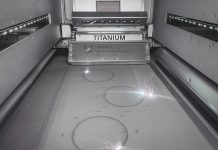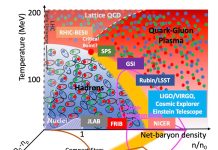Open Access Government produces compelling and informative news, publications, eBooks, and academic research articles for the public and private sector looking at health, diseases & conditions, workplace, research & innovation, digital transformation, government policy, environment, agriculture, energy, transport and more.
Home 2025
Archives
The collective organization of science denial: Toward a framework for collective response
The recent volume “Organized Science Denial. An Action Plan for Solutions” edited by Elena Bruni and Lianne M. Lefsrud, hosts the voices of scholars in organization theory to reflect about the collective dynamics of denial and its implications in this currently complex world.
MaQuIS: Pioneering quantum space exploration to unlock Mars’ interior and atmosphere
B.C. (Bart) Root, an Assistant Professor at Delft University of Technology, discusses pioneering efforts in quantum space exploration aimed at unlocking the secrets of Mars’ interior and atmosphere.
Making Europe the epicenter of global scientific talent
Cecilia Van Cauwenberghe explores investment in scientific minds, aiming to build Europe’s future by reflecting on Commissioner Zaharieva’s vision for research and innovation that seeks to establish Europe as the epicenter of global scientific talent.
How U.S. research and innovation are reshaping the global energy future
Cecilia Van Cauwenberghe discusses how U.S. research and innovation are transforming the global energy landscape, beginning with comments on energy innovation necessity.
Unlocking private financing for deep energy renovation
Guillaume Lorentz, Head of Bankable Sustainable Solutions at the Sustainable Finance Observatory, explores FiRéno+, a project under the LIFE 2021-2027 programme funded by the EU to unlock private financing for deep energy renovation.
Gallium oxide HV switches to turbo charge the AI data center
Prof. Singisetti at the University at Buffalo explains why gallium oxide semiconductor could be a key player in the AI transformation of society.
EPIC-X: Excelling deep tech through place-based innovation and connected ecosystems for women-led startups
EPIC-X envisions a European effort that unites diverse stakeholders to create an inclusive and equitable deep tech ecosystem, empowering women-led startups, fostering cross-border collaboration, and dismantling systemic barriers to innovation across Europe.
The prepared code: A values-driven approach to pandemic preparedness
Corinna Pannofino, Research Communications Manager at Trilateral Research, introduces a new framework for ethical research that was launched to prepare for the next pandemic, restoring public trust and ensuring scientific integrity.
Bridging big science and industry quality control for laser manufacturing processes
Discover how researchers are making the PETRA III Swedish Materials Science beamline’s X-rays accessible for tracking the evolution of material properties during laser processing.
4D dynamic earth: Advancing our understanding of the planet’s interior
B.C. (Bart) Root, an Assistant Professor at Delft University of Technology, discusses the 4D Dynamic Earth: Phase 1 project, which is enhancing our understanding of the planet’s interior.
Nanobubble transformation of water treatment
Professor Niall English discusses the challenges and advancements in water treatment, highlighting AquaB Nanobubble Innovations’ breakthrough nanobubble-generation technology, which offers a more sustainable solution for water treatment across various sectors.
Rethinking silicone coatings: Using polymer architecture to eliminate VOCs
Ring polysiloxanes offer a promising route to VOC-free silicone coatings without compromising performance; Anne Ladegaard Skov and Cody Brian Gale from the Technical University of Denmark explain.
Online and on-demand teaching materials for science education
Masatsugu Taneda, an Associate Professor at Osaka Kyoiku University, focuses on science education, in particular, the development of online and on-demand teaching materials, including chemistry.
The role of research and knowledge creation in decolonization
Geraldine Balzer from the University of Saskatchewan emphasizes the importance of reciprocity and relationality in research with Indigenous communities, advocating for collaborative knowledge generation that respects community values and involves extended engagement.
Laser light absorption on molten metal
Light absorption at high temperatures is highly impacted by interband absorption in addition to intraband absorption.
How did the first stars form in space?
Ralf Klessen, professor of theoretical astrophysics at Heidelberg University, investigates the physical processes that governed the formation of the first generation of stars in the early Universe.
Advancing materials science: Translating innovative research to commercial prospects
Aarthi Janakiraman, Research Director of the Advanced SciTech Division at Everest Group, focuses on advancing materials science and translating innovative research into commercial opportunities.
Driving innovation in additive manufacturing: Enhancing efficiency and certification
Ana Queirós Barbosa(1) and Christina Moeslund Zeuthen(2), explore driving innovation in additive manufacturing, explaining precisely how DILAPRO enhances efficiency and certification.
Physics: Quarks and Gluons explained
Professor Claudia Ratti from the Physics Department at the University of Houston explains the essential information about quarks and gluons, including the so-called Quark-Gluon Plasma, plus Quantum Chromodynamics.
Silent stakeholders in regulatory policy
In this first of a four-part series, Kati Rantala from the Faculty of Social Sciences at the University of Helsinki examines silent stakeholders in regulatory policy – identifying who they are, explaining their significance, and exploring ways to enhance their involvement.

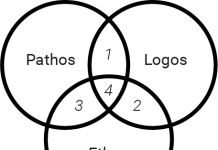
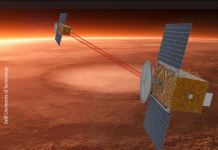
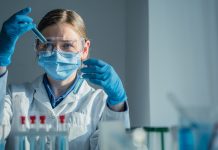




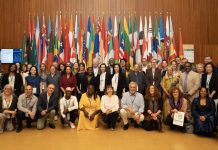
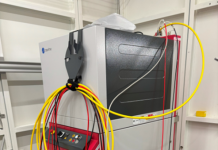
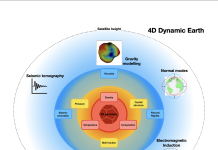

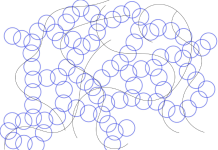



![How did the first stars form in space? Figure 1: Sketch of the evolution of the Universe over the last 13.77 billion years. It started with the Big Bang, followed by an extremely short period of rapid exponential expansion. The furthest we can see is the cosmic microwave background, when radiation decoupled from matter, approximately 380,000 years after the Big Bang. This is followed by the ‘dark ages,’ during which this radiation redshifted from the visible regime into infrared and sub-mm wavelengths. The occurrence of the first stars, about 400 million years after the Big Bang, ended this phase, spearheading the formation of galaxies as we see them today. [Credit: NASA/WMAP Science Team, public domain]](https://www.openaccessgovernment.org/wp-content/uploads/2025/05/Fig-1_1200-218x150.jpg)

